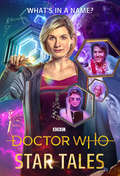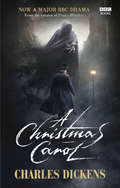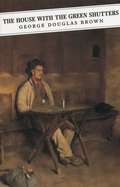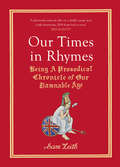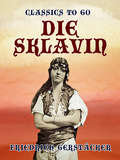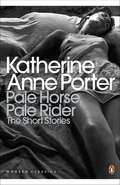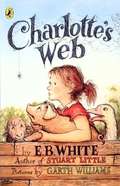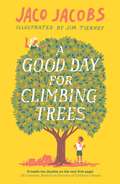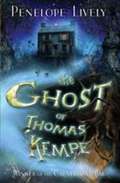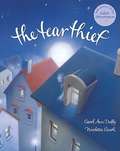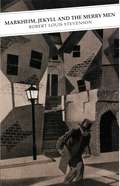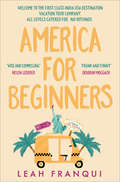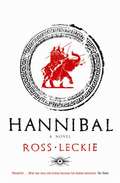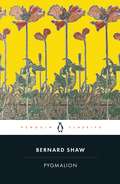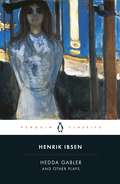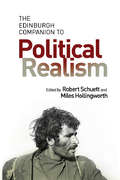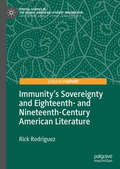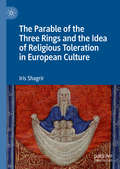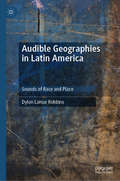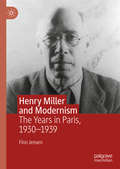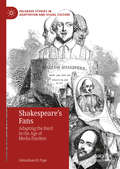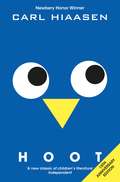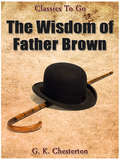- Table View
- List View
Doctor Who: Star Tales
by Steve Cole Paul Magrs Jenny T Colgan Jo Cotterill Trevor Baxendale Mike Tucker‘Even though they’re gone from the world, they’re never gone from me.’The Doctor is many things – curious, funny, brave, protective of her friends...and a shameless namedropper. While she and her companions battled aliens and travelled across the universe, the Doctor hinted at a host of previous, untold adventures with the great and the good: we discovered she got her sunglasses from Pythagoras (or was it Audrey Hepburn?); lent a mobile phone to Elvis; had an encounter with Amelia Earhart where she discovered that a pencil-thick spider web can stop a plane; had a 'wet weekend' with Harry Houdini, learning how to escape from chains underwater; and more.In this collection of new stories, Star Tales takes you on a rip-roaring ride through history, from 500BC to the swinging 60s, going deeper into the Doctor's notorious name-dropping and revealing the truth behind these anecdotes.
A Christmas Carol BBC TV Tie-In: Book And Bible Study Guide Based On The Charles Dickens Classic A Christmas Carol
by Charles Dickens"Bah! Humbug!" A Christmas Carol is Charles Dickens's timeless festive tale of transformation, redemption and compassion. One Christmas Eve Ebenezer Scrooge, the uncharitable, loathsome miser, is visited by the spirit of his dead partner, Jacob Marley. Marley, now a ghost condemned to wander the Earth in chains as punishment for his greedy and self-serving lifestyle warns Scrooge, who soon falls into a deep sleep. Over the course of the night, Scrooge is visited by three further phantoms. the Ghosts of Christmas Past, Christmas Present and Christmas Future. Through these three visions, Scrooge learns the error of ways, and he awakes on Christmas day ready to right the wrongs of Christmases past. Accompanying a the three-part special from Steven Knight (Taboo, Peaky Blinders) starring Guy Pearce, Andy Serkis, Stephen Graham, Charlotte Riley, Joe Alwyn, Vinette Robinson, Jason Flemyng, Kayvan Novak and Lenny Rush. Written and executive produced by Steven Knight, executive produced by Tom Hardy, Ridley Scott, Dean Baker, David W. Zucker, Kate Crowe and Mona Qureshi for the BBC.
The House With The Green Shutters (Canongate Classics #63)
by George Douglas BrownThe most famous Scottish novel of the early twentieth century, The House with the Green Shutters has remained a landmark on the literary scene ever since it was first published in 1901. Determined to overthrow the sentimental 'kailyard' stereotypes of the day, George Douglas Brown exposed the bitter pettiness of commercial greed and small-town Scottish life as he himself had come to know it. More than this, however, his novel lays bare the seductive and crippling presence of patriarchal authority in Scottish culture at large, symbolised by the terrible struggle between old John Gourlay and his weak but imaginative son. Illuminated by lightning flashes of descriptive brilliance, Brown's prose evokes melodrama, Greek tragedy and postmodern alienation in a unique and unforgettably powerful reading experience.
Our Times in Rhymes: Being a Prosodical Chronicle of Our Damnable Age
by Sam LeithA parliament of fools, or a confederacy of dunces? Blethering celebrities and blundering politicians, royal babies and right royal cock-ups, milkshake madness and vegan sausage rolls - and, of course, the long and winding road to Brexit. If ever the times were ripe for a return to the high days of Augustan satire, it’s now – and the Spectator’s literary editor Sam Leith provides it. Our Times in Rhymes is a waspish, affectionate and very funny look at the state of our nation as it – let's be even-handed - teeters on the cliff-edge of a marvellous opportunity. Here is all the insanity and inanity of 2019, month by cherishable month, rendered in galloping comic verse and paired with satirical drawings by the brilliant cartoonist Edith Pritchett. It makes the perfect Christmas stocking filler for anyone who needs a good laugh at the damnable times we live in.
Die Sklavin (Classics To Go)
by Friedrich GerstäckerExcerpt: "Das Mail- oder Postboot war eben von New-Orleans angelangt und über die von demselben an's Ufer geschobene Planke strömten in ununterbrochenem Zuge fast alle Geschäftsleute und Müßiggänger der kleinen Stadt Bayou Sarah an Bord, um theils für sie angekommene Briefe und Packete in Empfang zu nehmen, theils ihre Neugierde zu befriedigen und an dem zierlich ausgeschmückten Schenkstande ein Glas Brandy und Eiswasser zu schlürfen. Der Capitain des Postboots, ein kleiner Franzose mit grauem Rock, schwarzem Filzhut und außerordentlich blank gewichsten Stiefeln, schien überall zu sein, und während ihm große Schweißtropfen an der gerötheten Stirn glänzten, schimpfte er in fürchterlich gebrochenem Englisch auf Gott und die Welt, vorzüglich aber auf den Postmeister, der ihm aus seinem Comptoir, eben als er kaum den Rücken gewandt, ein Packet Briefe in zu großem Amtseifer entführt und mit hinauf auf die Post genommen hatte. »God dam him!« wetterte der kleine Mann, mit der Faust auf das grünbeschlagene Pult niederschlagend, daß die Tinte hoch empor spritzte – »was hat der Pflasterschmierer (der Postmeister hatte zu gleicher Zeit eine Apotheke und einen Kramladen und ließ sich gern »Doctor« nennen) in meinem Comptoir zu suchen? Schleppt Briefe hinauf, eh? Denkt nachher Wunder, was er gethan hat; aber wart' – Du kommst mir wieder.« »Capitain! Briefe für mich angekommen?« fragte ein junger schlanker Mann, dem Erzürnten lachend dabei auf die Schulter klopfend. »Geht in die Hölle oder zum Quacksalber hinauf!« fluchte dieser weiter, ohne sich nur die Mühe zu nehmen, herumzuschauen, wer ihn angeredet habe. »Hallo! was ist wieder im Wind?« lachte der junge Pflanzer – »die Kessel voll zum Zerplatzen? Dampf genug, um drei gewöhnliche Boote in die Luft zu blasen! immer noch der Alte. Ihr Franzosen seid doch sonderbares Volk; gleich Feuer und Flamme, wie Dupont's Schießpulver!« »Der Postmeister hat die Briefe mit hinaufgenommen,« antwortete der Buchhalter statt des Capitains. »Dam him!« rief dieser und warf die Glasthür hinter sich in's Schloß, daß die Scheiben klirrten.”
Pale Horse, Pale Rider: The Short Stories of Katherine Anne Porter (Penguin Modern Classics Ser.)
by Katherine Porter Sarah ChurchwellFrom the gothic Old South to revolutionary Mexico, few writers have evoked such a multitude of worlds, both exterior and interior, as powerfully as Katherine Anne Porter. This collection gathers together the best of her Pulitzer Prize-winning short fiction, including 'Pale Horse, Pale Rider', where a young woman lies in a fever during the influenza epidemic, her childhood memories mingling with fears for her fiancé on his way to war, and 'Noon Wine', a haunting story of tragedy and scandal on a small dairy farm in Texas. In all of the compelling stories collected here, harsh and tragic truths are expressed in prose both brilliant and precise.
Charlotte's Web (PDF)
by E. B. White Garth WilliamsThe tale of how a little girl named Fern, with the help of a friendly spider, saved her pig Wilbur from the usual fate of nice fat little pigs.
A Good Day for Climbing Trees (PDF)
by Jaco Jacobs Kobus GeldenhuysTwo unlikely heroes inspire a whole town by fighting to save a tree. Sometimes, in the blink of an eye, you do something that changes your life forever. Like climbing a tree with a girl you don't know. Marnus is tired of feeling invisible, living in the shadow of his two brothers. His older brother is good at breaking swimming records and girls’ hearts. His younger brother is already a crafty entrepreneur who has tricked him into doing the dishes all summer. But when a girl called Leila turns up on their doorstep one morning with a petition, it’s the start of an unexpected adventure. And finally, Marnus gets the chance to be noticed...
The Ghost of Thomas Kempe (PDF)
by Penelope LivelyThe classic ghost story from Penelope Lively, one of the modern greats of British fiction for adults and children alike. James is fed up. His family has moved to a new cottage - with grounds that are great for excavations, and trees that are perfect for climbing – and stuff is happening. Stuff that is normally the kind of thing he does. And he's getting blamed for it. But it's not him who's writing strange things on shopping lists and fences. It's not him who smashes bottles and pours tea in the Vicar's lap. It's a ghost - honestly. Thomas Kempe the apothecary has returned and he wants James to be his apprentice. No one else believes in ghosts. It's up to James to get rid of him. Or he'll have no pocket money or pudding ever again. An iconic ghost story for children, The Ghost of Thomas Kempe is adored by thousands of children.
The Tear Thief (PDF)
by Carol Duffy Nicoletta Ceccoli Juliet StevensonThe mysterious fairy-like Tear Thief, visible only as a reflection in a puddle, creeps into town at night, listening for the sound of crying. She snatches a tear from a boy in the bathtub, many from a girl in a tantrum, and some from fighting twins. In her collecting sack, the tears are jewels, colored according to their cause, but the most valuable are the tears of real sadness. When the Tear Thief passes a girl crying these tears, the girl sees her in a puddle and asks about why she collects them. The Tear Thief tells her that the light of the moon is made of tears, but the most beautiful light comes from the tears of sadness. The girl is crying because she has lost her dog. When she finds it and goes home, she sees the beauty of the moonlight and remembers the Tear Thief. Ceccoli's acrylic paintings fill the double pages with visual poetry, quiet scenes of city streets and rooftops along with an infrequent room with crying child. The smoothness of the paintings, mainly with shades of blue backgrounds, creates a hush. There is a strange magic over the story, with possible meanings to ponder Magical, moving and memorable, this book offers an ideal way of talking to children about their feelings. Ages: 4-9 Colour illustrations.
Markheim, Jekyll And The Merry Men: Shorter Scottish Fiction (Canongate Classics #61)
by Robert Louis StevensonShorter Scottish Fiction. Introduced by Roderick Watson. Ever since its first appearance in 1886, Robert Louis Stevenson’s Strange Case of Dr Jekyll and Mr Hyde has proved itself to be a tale of undiminished power for readers all over the world. It remains one of the great masterpieces of psychological fiction and yet it is not alone in Stevenson’s work, for he had explored similar themes in several other stories too, all inextricably linked with his native country. This collection makes a strong case for the essentially Scottish origins of Stevenson’s best short fiction, derived as it is from Calvinism’s feeling for the immanence of evil, and driven by a sense of man’s darker, divided self which goes back to Hogg’s Justified Sinner. Thus it is that the story of the respectable Dr Jekyll, even in a London setting, has links that stretch back to the narrow wynds of Edinburgh and the bleak moors and shores of the North. In this company stories of possession, doubleness and terror such as ‘The Merry Men’, ‘The Body Snatcher’, ‘Markheim’, ‘Thrawn Janet’ and others, reveal more clearly than ever their Scottish roots, and that fascination with the uncanny which brought the creator of Mr Hyde screamingly awake one winter’s night over a hundred years ago.
Hannibal: The Novel (Carthage Trilogy Ser. #1)
by Ross LeckieA battle is like lust. The frenzy passes. Consequence remains. Hannibal is an epic vision of one of history’s greatest adventurers, the almost mythical man who most famously led his soldiers on elephants over the Alps. In Ross Leckie’s unforgettable re-creation of the Punic wars, it is Hannibal, the Carthaginian general, who narrates the story, and who is carried by his all-consuming ambition through profoundly bloody battles against the great Roman armies of early empire. In this breathtaking chronicle of love and hate, heroism and cruelty, one of humanity's greatest adventurers is brought to life, who learns through suffering that man is but a shadow of a dream.
Pygmalion: A Romance In Five Acts (classic Reprint)
by George Bernard Shaw Nicholas GrenePygmalion both delighted and scandalized its first audiences in 1914. A brilliantly witty reworking of the classical tale of the sculptor Pygmalion, who falls in love with his perfect female statue, it is also a barbed attack on the British class system and a statement of Shaw's feminist views. In Shaw's hands, the phoneticist Henry Higgins is the Pygmalion figure who believes he can transform Eliza Doolittle, a cockney flower girl, into a duchess at ease in polite society. The one thing he overlooks is that his 'creation' has a mind of her own.
Hedda Gabler and Other Plays (Penguin Classics Ser.)
by Henrik IbsenFour of Ibsen's most important plays in superb modern translations, part of the new Penguin Ibsen series.In these four unforgettably intense plays, Henrik Ibsen explores the complex nature of truth, the tension between freedom and responsibility, and the terrible pull that the past exerts over the present. In The Wild Duck, an idealist destroys a family by exposing the lie behind his friend's marriage. In Rosmersholm, a respectable man is driven to extremes by guilt over his wife's death, while in The Lady from the Sea a woman is caught between her family and the enticement of the wild sea. And in Hedda Gabler, one of Ibsen's most famous and vivid anti-heroines struggles to break free from the conventional life she has created for herself, with tragic results.The new Penguin series of Ibsen's major plays offer the best available editions in English, under the general editorship of Tore Rem. The plays have been freshly translated by the best modern translators and are based on the recently published, definitive Norwegian edition of Ibsen's works. They all include new introductions and editorial apparatus by leading scholars.Vol. 1: Peer Gynt and BrandVol. 2: A Doll's House and Other PlaysVol. 3: Hedda Gabler and Other PlaysVol. 4: The Master Builder and Other Plays
The Edinburgh Companion to Political Realism
This substantial reference work examines political realism in terms of its history, its scientific methodology and its normative role in international affairs. Split into three sections, it covers the 2000-year canon of realism: the different schools of thought, the key thinkers and how it responds to foreign policy challenges.
The Edinburgh Companion to Political Realism (Edinburgh University Press Ser.)
by Edited by Robert Schuett Miles HollingworthThis substantial reference work examines political realism in terms of its history, its scientific methodology and its normative role in international affairs. Split into three sections, it covers the 2000-year canon of realism: the different schools of thought, the key thinkers and how it responds to foreign policy challenges.
Immunity's Sovereignty and Eighteenth- and Nineteenth-Century American Literature (Pivotal Studies in the Global American Literary Imagination)
by Rick RodriguezImmunity’s Sovereignty and Eighteenth- and Nineteenth-Century American Literature tracks flashpoint events in U.S. history, constituting a genealogy of the effectiveness and resilience of the concept of immunity in democratic culture. Rick Rodriguez argues that following the American Revolution the former colonies found themselves subject to foreign and domestic threats imperiling their independence. Wars with North African regencies, responses to the Haitian revolution, reactions to the specter and reality of slave rebellion in the antebellum South, and plans to acquire Cuba to ease tensions between the states all constituted immunizing responses that helped define the conceptual and aesthetic protocols by which the U.S. represented itself to itself and to the world’s nations as distinct, exemplary, and vulnerable. Rodriguez examines these events as expressions of an immunitary logic that was—and still is— frequently deployed to legitimate state authority. Rodriguez identifies contradictions in literary texts’ dramatizations of these transnational events and their attending threats, revealing how democracy’s exposure to its own fragility serves as rationale for immunity’s sovereignty. This book shows how early U.S. literature, often conceived as a delivery system for American exceptionalism, is in effect critical of such immunitary discourses.
The Parable of the Three Rings and the Idea of Religious Toleration in European Culture
by Iris ShagrirThis book examines the premodern encounter between the three monotheistic religions through the unique prism of a premodern literary work—The Parable of the Three Rings—a poignant and charming tale of a father who had three sons and one precious ring. By tradition he was to bequeath the ring to his heir, but he loved his three sons equally — so he had two new rings made, crafted to be indistinguishable from the original, and on his deathbed gave a ring to each son. The narrator explains that the father is God, and his sons are the Jews, the Christians, and the Muslims, each believing themselves to be the sole upholders of the true religion. A historical and literary study, the book offers a comprehensive discussion of the various guises of the Parable, from the early Middle Ages onwards, and highlights its capacity to reflect openness and pluralism in the interfaith encounter.
Audible Geographies in Latin America: Sounds of Race and Place
by Dylon Lamar RobbinsAudible Geographies in Latin America examines the audibility of place as a racialized phenomenon. It argues that place is not just a geographical or political notion, but also a sensorial one, shaped by the specific profile of the senses engaged through different media. Through a series of cases, the book examines racialized listening criteria and practices in the formation of ideas about place at exemplary moments between the 1890s and the 1960s. Through a discussion of Louis Moreau Gottschalk’s last concerts in Rio de Janeiro, and a contemporary sound installation involving telegraphs by Otávio Schipper and Sérgio Krakowski, Chapter 1 proposes a link between a sensorial economy and a political economy for which the racialized and commodified body serves as an essential feature of its operation. Chapter 2 analyzes resonance as a racialized concept through an examination of phonograph demonstrations in Rio de Janeiro and research on dancing manias and hypnosis in Salvador da Bahia in the 1890s. Chapter 3 studies voice and speech as racialized movements, informed by criminology and the proscriptive norms defining “white” Spanish in Cuba. Chapter 4 unpacks conflicting listening criteria for an optics of blackness in “national” sounds, developed according to a gendered set of premises that moved freely between diaspora and empire, national territory and the fraught politics of recorded versus performed music in the early 1930s. Chapter 5, in the context of Cuban Revolutionary cinema of the 1960s, explores the different facets of noise—both as a racialized and socially relevant sense of sound and as a feature and consequence of different reproduction and transmission technologies. Overall, the book argues that these and related instances reveal how sound and listening have played more prominent roles than previously acknowledged in place-making in the specific multi-ethnic, colonial contexts characterized by diasporic populations in Latin America and the Caribbean.
Henry Miller and Modernism: The Years in Paris, 1930–1939
by Finn JensenHenry Miller and Modernism: The Years in Paris, 1930–1939 represents a major reevaluation of Henry Miller, focusing on the Paris texts from 1930 to 1939. Finn Jensen analyzes Miller in the light of European modernism, in particular considering the many impulses Miller received in Paris. Jensen draws on theories of urban modernity to connect Miller’s narratives of a male protagonist alone in a modern metropolis with his time in Paris where he experienced a self-discovery as a writer. The book highlights several sources of inspiration for Miller including Nietzsche, Rimbaud, Hamsun, Strindberg and the American Transcendentalists. Jensen considers the key movements of modernity and analyzes their importance for Miller, studying Eschatology, the Avant-Garde, Dada, Surrealism, Expressionism, and Anarchism.
Shakespeare’s Fans: Adapting the Bard in the Age of Media Fandom (Palgrave Studies in Adaptation and Visual Culture)
by Johnathan H. PopeThis book examines Shakespearean adaptations through the critical lens of fan studies and asks what it means to be a fan of Shakespeare in the context of contemporary media fandom. Although Shakespeare studies and fan studies have remained largely separate from one another for the past thirty years, this book establishes a sustained dialogue between the two fields. In the process, it reveals and seeks to overcome the problematic assumptions about the history of fan cultures, Shakespeare’s place in that history, and how fan works are defined. While fandom is normally perceived as a recent phenomenon focused primarily on science fiction and fantasy, this book traces fans’ practices back to the eighteenth century, particularly David Garrick’s Shakespeare Jubilee in 1769. Shakespeare’s Fans connects historical and scholarly debates over who owns Shakespeare and what constitutes an appropriate adaptation of his work to online fan fiction and commercially available fan works.
Hoot: A Novel Teaching Pack
by Carl HiaasenHilarious, touching and thought-provoking, Hoot is a modern classic, now celebrating its fifteenth anniversary. Winner of the Newbery Honor award and a New York Times bestseller, Carl Hiaasen's first novel celebrates the natural world with his trademark wit and warmth.Roy Eberhardt never wanted to move to Florida. In his opinion, Disney World is an armpit. Roy’s family moves around a lot so he’s used to the new-kid drill – he's also used to bullies like Dana Matherson. And anyway, it’s because of Dana that Roy gets to see the mysterious running boy who runs away from the school bus and who has no books, no backpack and, most bizarrely, no shoes. Sensing a mystery, Roy starts to trail the mystery runner – a chase that will introduce him to many weird Floridian creatures: potty-trained alligators, cute burrowing owls, a fake-fart champion, a shoeless eco-warrior, a sinister pancake PR man, new friends and some snakes with sparkly tails. As the plot thickens, Roy and his friends realise it's up to them to save the endangered owls from the evil Mother Paula's pancake company who are planning to build a new restaurant on their home . . .
Calling Sehmat
by Harinder SikkaCalling Sehmat is a thrilling saga of a spy who, in the service of our nation, gave all of herself and that of her family so that we may live in peace. It is a story of a Kashmiri woman who married a Pakistani Army Officer so as to provide the Indian intelligence with invaluable information during the Indo-Pak War of 1971. Sehmat devised unique ways in her quest to get closer to the top brass in Pakistan. She almost single-handedly torpedoed Pakistans war plans through indefinable courage, wit and determination and was responsible for saving lives of scores of Indian soldiers. The story gives rare insight to the humble yet brave people of Kashmir who not only swear by India but also are willing to sacrifice their very being for the service of our nation.
The Wisdom of Father Brown: A Collection Of Short Stories (Classics To Go #2)
by G. K. ChestertonFather Brown is a fictional character created by eng novelist G. K. Chesterton, who stars in 51 detective short stories. This collection features the following twelve stories. The Absence of Mr Glass, The Paradise of Thieves, The Duel of Dr Hirsch, The Man in the Passage, The Head of Caesar, The Purple Wig, The Perishing of the Pendragons, The God of the Gongs, The Salad of Colonel Cray, The Strange Crime of John Boulnois and The Fairy Tale of Father Brown.
